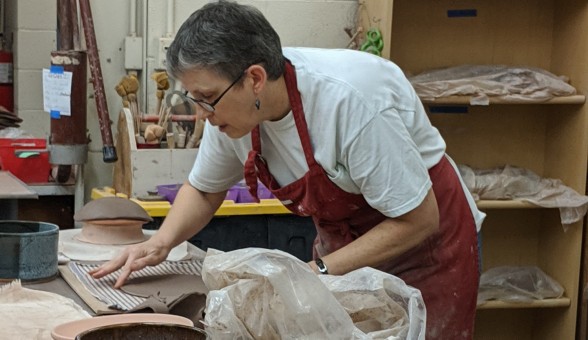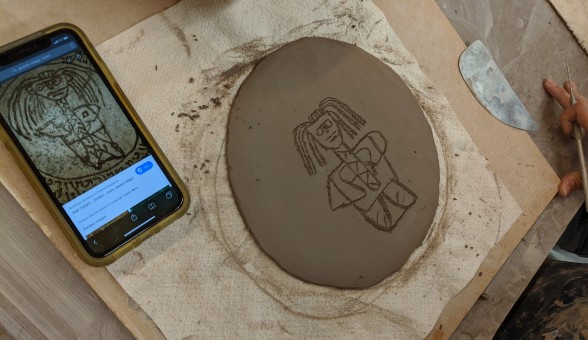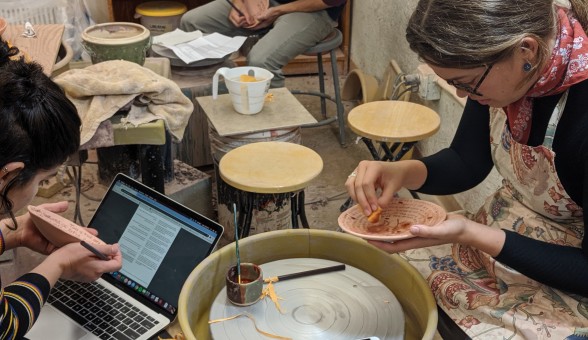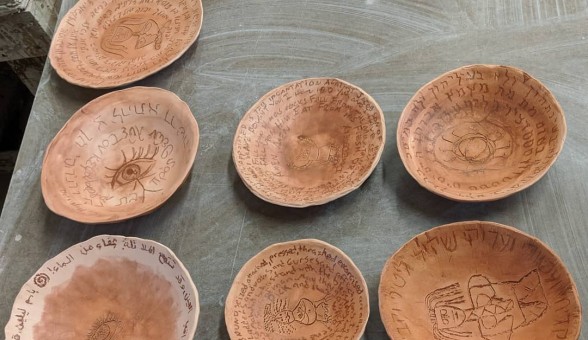Religious Studies: Beyond the Classroom

Pottery in the Craft Center

Pottery in the Craft Center

Pottery in the Craft Center

Pottery in the Craft Center
Making Magic
Professor Krista Dalton’s “Defense Against the Dark Arts in the Jewish Tradition” class partnered with the Kenyon College Craft Center to make personalized incantation bowls. Incantation bowls from late antique Babylonia (modern-day Iraq and Iran) were produced from the sixth to eighth centuries C.E. in Jewish Aramaic and represent a vibrant material culture of Jews and their neighbors in the ancient world. These bowls were often buried and meant to capture demons who might inhabit a particular dwelling.
In a course devoted to analyzing ancient Jewish magic, it was important to Professor Dalton for students to see incantation bowls as more than symbols but as a form of knowledge embodied in relationships between human subjects, divine beings, and material objects. “Late Antiquity was a time in which gods and men routinely interacted, and experts of knowledge—of both heavenly and earthly origin—provided meaningful ritual services,” Dalton explained, “This was a radically different way of inhabiting the world than for many in modernity. I wanted my students to feel the clay, examine the words of their incantations, and feel the physicality of ritual knowledge and expertise.”
Robin Nordmoe, an employee at the campus book store and pottery instructor at the Craft Center, led two sessions on the construction of draped bowls and the art of transcribing the text.
In the first session, students cut round clay disks and inscribed the visage of a demon in the center. Students referred to photographs of surviving Babylonian incantation bowls as inspiration for their depictions. The clay disks were then draped over molds and set to dry.
After the first round of firing, the students wrote their incantations upon the rough surface of the bowls. Using Shaul Shaked’s "Aramaic Bowl Spells" (2013) as their base, students adapted and copied existing Aramaic incantations onto their bowls. Some students were inspired to translate incantations into other languages they knew, such as Arabic and Old English. They then smoothed pigment into the crevices of the bowls in order to mimic the weathered imperfections of firing systems of late antiquity (the kiln at Kenyon is just too clean!).
In the end, each student participated in the ancient tradition of incantation bowl making and took home an artifact as a reflection of their class studies. The Religious Studies department applauds the intercommunity partnerships that Kenyon fosters, particularly in this case with the Craft Center, which provides students with opportunities to learn through embodied experience.